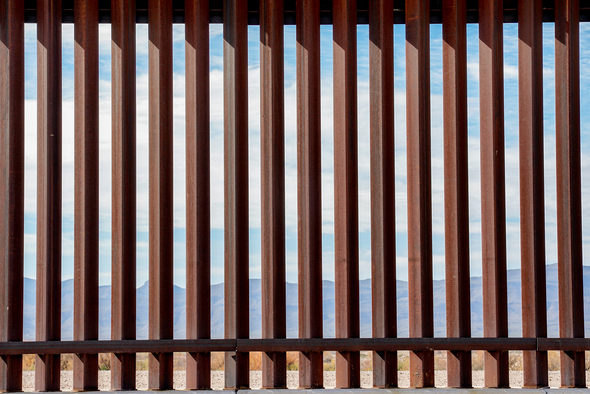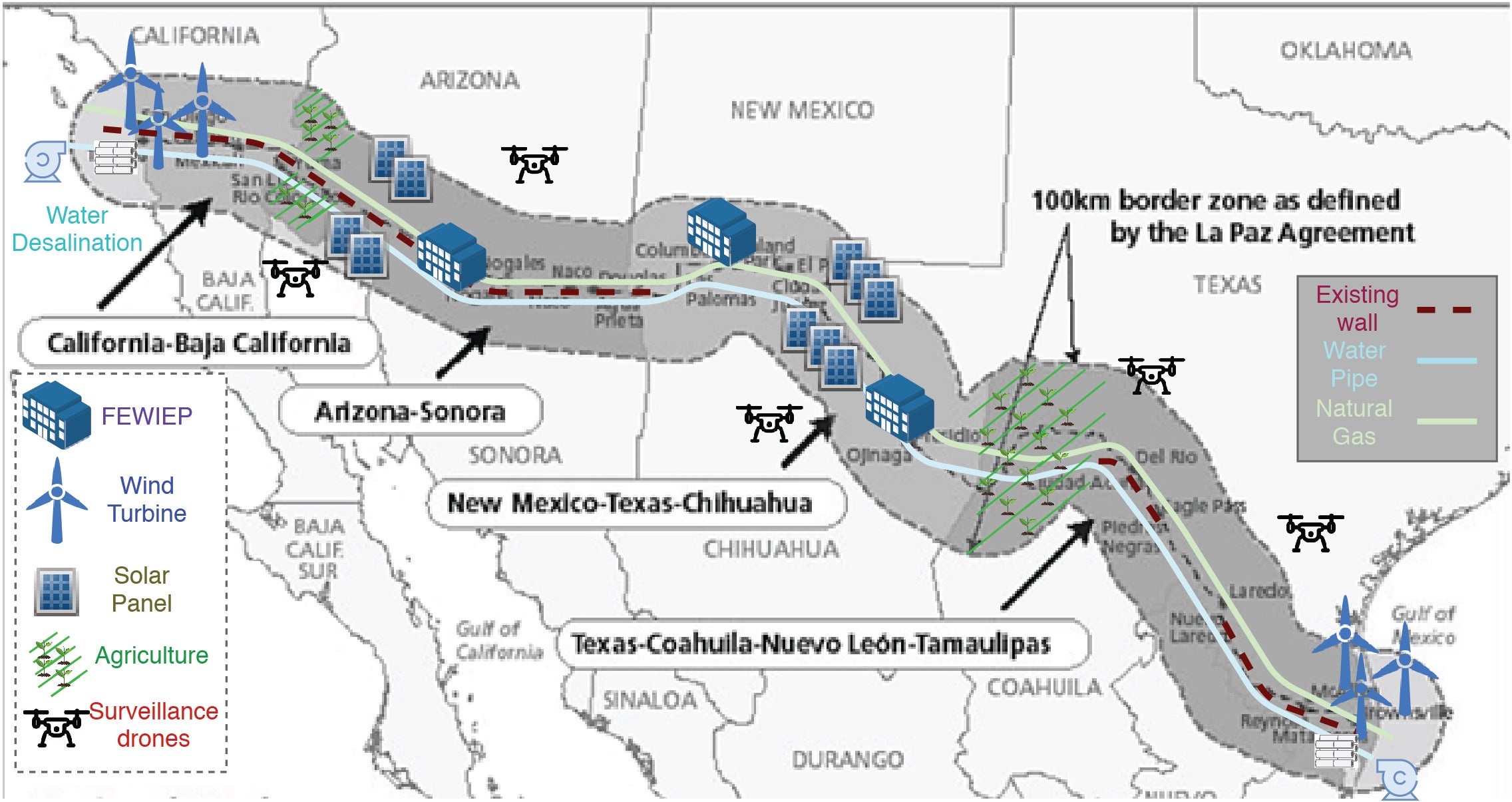Building
solar, wind, natural gas and water infrastructure all along the
U.S.–Mexico border would create economic opportunity rather than
antagonism

Here’s an idea: Instead of an endless, inert wall along the U.S.–Mexico border, line the boundary with 2,000 miles of natural gas, solar and wind power plants. Use some of the energy to desalinate water from the Gulf of Mexico and the Pacific Ocean and ship it through pipelines to thirsty towns, businesses and new farms along the entire border zone. Hire hundreds of thousands of people from both countries to build and run it all. Companies would make money and provide security to safeguard their assets. A contentious, costly no-man’s-land would be transformed into a corridor of opportunity.
Crazy? Maybe—or maybe not. History is full of ideas that initially sounded wacky yet ended up changing society.
The idea is more than a pipe dream. A consortium of 27 engineers and scientists from a dozen U.S. universities has developed a plan. Last week they delivered it to three U.S. representatives and one senator. “Let’s put the best scientists and engineers together to create a new way to deal with migration, trafficking—and access to water. These are regions of severe drought,” says Luciano Castillo, a professor of energy and power at Purdue University who leads the group. “Water supply is a huge future issue for all the states along the border in both countries.”

If you’re getting a mental picture but still shaking your skeptical head, as I was initially, consider the larger situation Castillo and his colleagues have outlined in a brief white paper sent to Scientific American. The border region receives boundless solar energy, and has significant natural gas and wind resources. It’s also suffering from extreme drought, and water shortages are predicted to get worse. Farming is exceedingly difficult. And jobs are often scarce—in part because of lack of water and power. If an energy and water corridor were built, the facility owners would protect their properties. Transmission, gas and water lines would be monitored by companies, states and federal agencies, as many elsewhere are now. And the plants could be integrated with security walls or fences.
With water and power, farming and manufacturing could flourish. That means jobs on both sides of the border. Many people from Mexico and farther south are trying to enter the U.S. precisely because there is no opportunity for them at home. The “future energy, water, industry and education park,” as the white paper calls it, “will create massive opportunities for employment and prosperity.” Imagine the number of jobs created, Castillo says, just for the part of the plan that calls for installing eight million solar panels.
The border industrial park, as I’ll call it, could work politically, too. “Democrats want a Green New Deal. Republicans want border security,” Castillo explains. “Both parties could win. It could be a win–win for the U.S. and Mexico, too. This idea could spark a completely new conversation about the border. And we need that.”
Of course there are all sorts of hard questions. Safety is probably the toughest. Would construction workers and operating staff be at risk from smugglers and traffickers? Could employees and private security firms really confront possible serious threats or say no to bribes? Wouldn’t walls and fences linking the power plants pose a serious blockade to migrating wildlife? On Tuesday the Industrial Energy Consumers of America sent a letter to the Senate asking it to toughen gas pipeline security requirements because “one successful attack could shut down tens of thousands of manufacturing facilities.”
Castillo turns these negatives to positives—the philosophy behind the whole plan, really. Migrants could be workers. There are models for cooperation between governments: The U.S. and Canada have built and continue to protect important national infrastructure along their borders. For example, hydroelectric plants produce power on both sides of Niagara Falls. The U.S. and Mexico would be co-investors in the border industrial park, and would work together to guard it.
Desalination of seawater, a linchpin for the park, is expensive and can also foul the ocean. An enormous amount of saltwater would have to be freshened to fill a 2,000-mile pipeline. The consortium says power could come from wind and solar, strong at the Gulf and Pacific ends of the park. A 600-megawatt power plant (equivalent to a sizeable coal plant or modest nuclear plant) at the Gulf could power enough desalination to provide 2.3 million acre-feet of freshwater annually, which Castillo says is enough to supply future needs along the Texas–Mexico border. Solar farms would power water pumps for the pipeline. “We would need innovation to really bring down the energy demand and cost of desalination,” he acknowledges. “And we would have to find creative solutions for using the salty brine” that is a by-product. Recent studies show that if the brine is simply dumped back into the sea, it can ruin coastal waters there. Yet on Tuesday the Massachusetts Institute of Technology announced a new process to convert that brine into useful chemicals.
“We’re going to have some challenges,” Castillo notes. “We will have plenty to deal with.”
One of the first steps would be to start a series of institutes along the corridor to bolster innovation and create workforce education. They would probably be run as partnerships among academia, industry and government. The proposal the consortium sent to the four legislators asks for $1.1 billion to get these and other actions up and running.
Building infrastructure is a big priority in the current Congress, despite its endless bickering, so perhaps a border industrial park could rally legislators. They just have to think differently about how to solve the border issue, Castillo says. “Don’t think of it as a barrier. Think of it as an energy corridor, a water corridor. It can create great opportunity for both countries. It can create peace.”
The views expressed are those of the author(s) and are not necessarily those of Scientific American.
